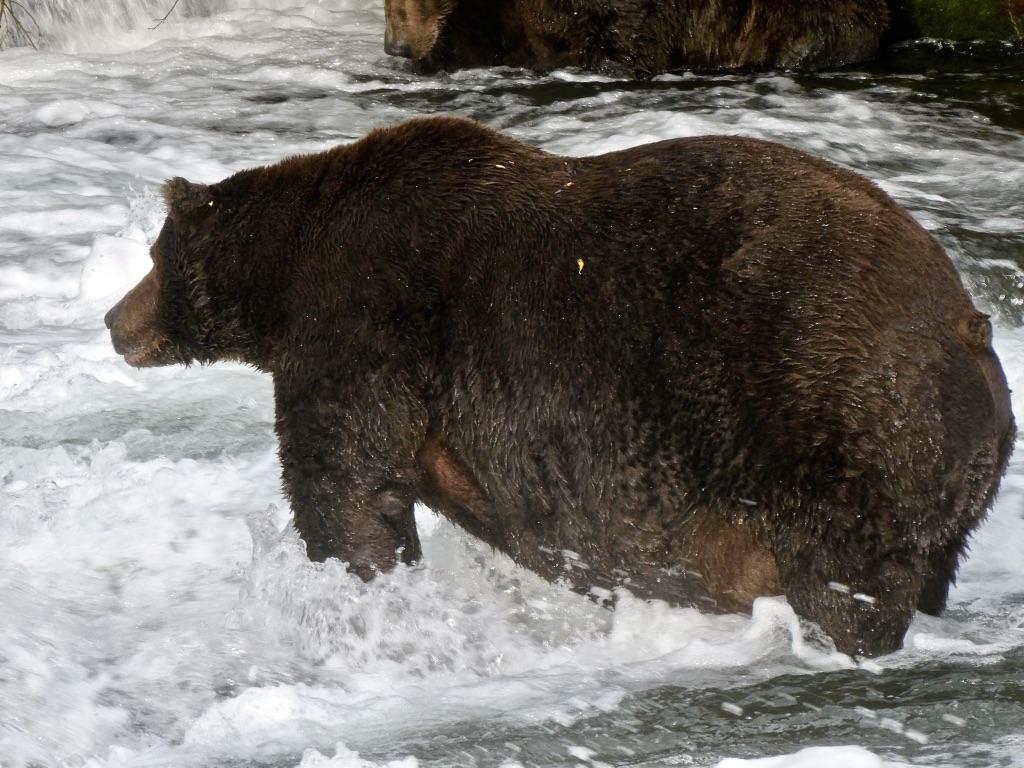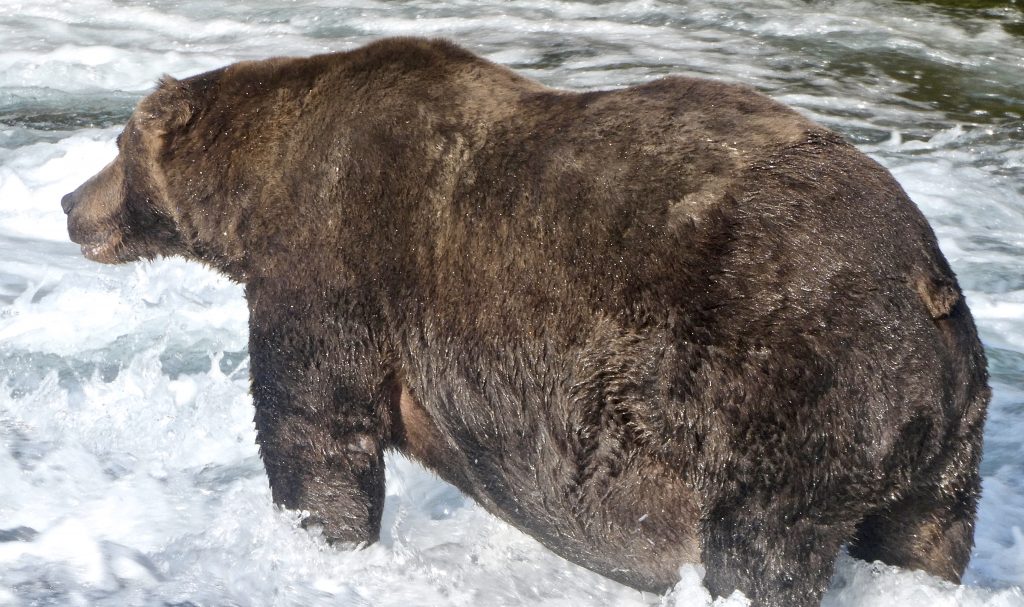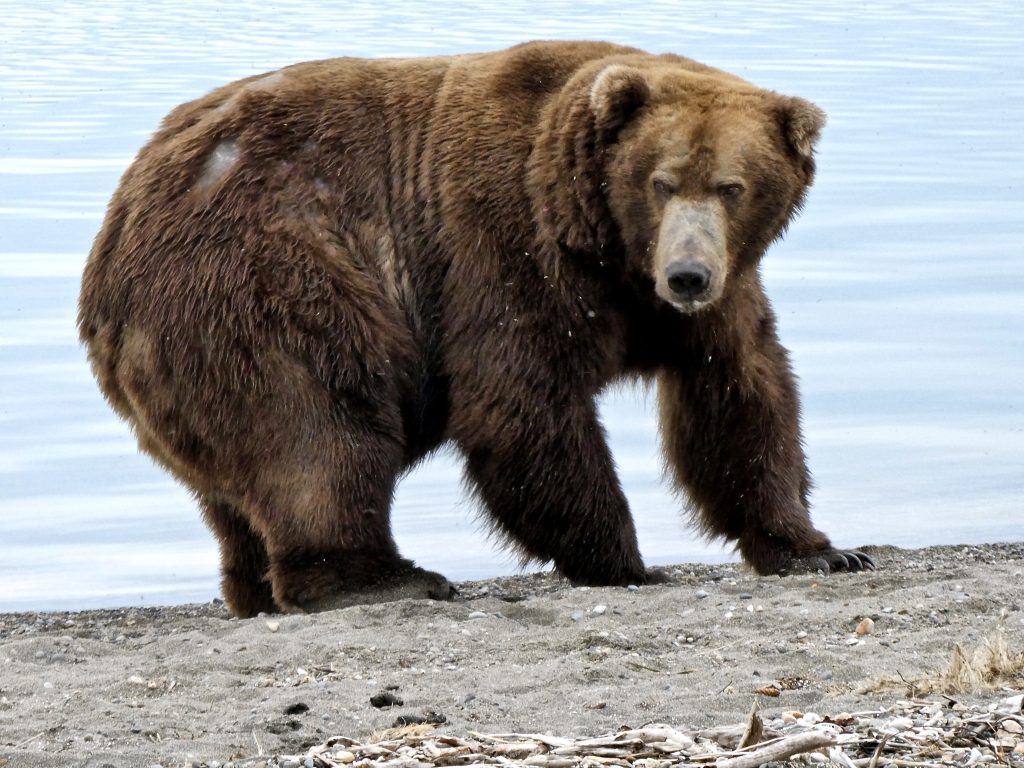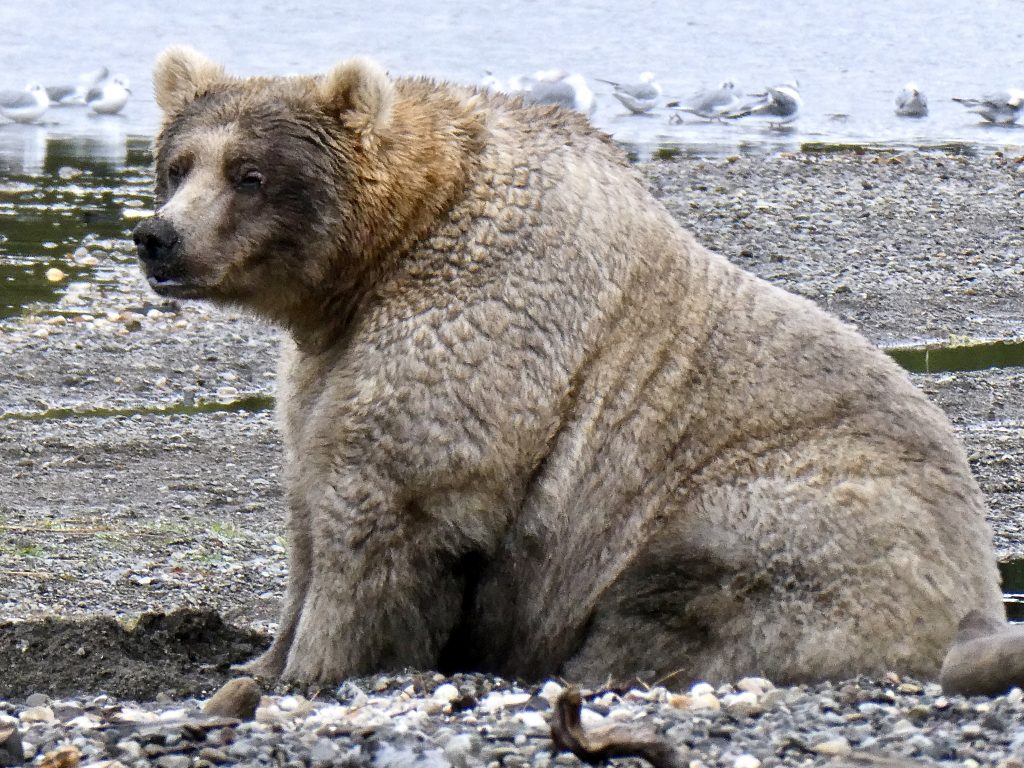Katmai National Park’s Fat Bear Week
2 November 2020
By Amber Kraft
Only one winner will emerge. Contestants go head-to-head and winning is at the mercy of the participating audience. There are no rules for voting. Some looked at the amount of gain, some focused on overall girth and some couldn’t get past the mammoth “Beardonkadonk” present. This was the event of the season at Katmai National Park and Preserve and we are of course talking about Fat Bear Week, something that could only come together through the wonderful partnership between Katmai, Explore.org and the Katmai Conservancy.
People from South Korea to South Dakota, from the United Arab Emirates to the United Kingdom, from Australia to Austria and, well, suffice to say people from all around the world cast their more than 646,000 votes throughout the week. They championed their favorite fat bear through campaign posters and slogans (from “Take off with 747” to Holly supporters saying, “I’m with FUR”) as well as chatter throughout multiple social media platforms resulting in some fierce competition.
Ultimately, Bear 747 ate his way to the top of the championship, taking his first crown in the six year history of the fat bear competition, joining past champions like Bear 480 (“Otis”), Bear 435 (“Holly”) and Bear 128 (“Grazer”). Many have asked if this means Bear 747 will “finally” get a name and the suggestions have been plentiful including Jumbo, Bear Force One, and Bearplane. Others are staunch defenders of Bear 747 growing into his number including one person saying his name is 747 because his bear backside “goes Boeing.” In all seriousness though, park policy is to give the bears numbers for research purposes but not a name. Naming them makes them feel more docile and domesticated, but these are completely wild and unpredictable bears which we want to make sure everyone remembers and respects, even when we are watching bear “cuddle puddles” on the livecams like everyone else.


Celebrating fatness is not without controversy, but Katmai National Park wants to show off the healthy ecosystem here and for these animals, fat bears = healthy bears. Large amounts of body fat show good health and a strong chance of survival through their hibernation/torpor, something that could last up to six months, during which they will not eat or drink and can lose up to one third of their total body mass. One element the bears of Brooks River have is their choice of river, perhaps the only location on Earth offering bears the chance to feed on so many salmon for such a long period of time.
So just how fat are our fat bears? We haven’t yet found an employee willing to be in charge of a scale weighing program for the bears, so we’ve turned to alternate methods to try and determine these figures. Last year, Alaska Regional GIS Specialist Joel Cusick devised a method of laser scanning to non-invasively measure the volume of the portly participants of Fat Bear Week. He returned this year, armed with knowledge gained and the patience to wait for a bear waiting for a fish. A tool like Terrestrial Lidar scanning is used almost exclusively in Civil Engineering fields, to scan interiors of buildings for example, so putting it to the test on live animals is all new. Right now, we can use this to determine the volume of a bear as well as length, height and girth. As we learn more, this could open numerous new potential applications, perhaps even to monitor the overall health of these, and other, animals in the wild.
Most importantly for all those voting for Bear 747 this year, Joel’s results show they did indeed vote for the largest bear of Brooks River. He came in with a volume of 22.6 cubic feet compared to 19.78 cubic feet for runner up Bear 32 (“Chunk”) and 17.7 cubic feet for Bear 151 (“Walker”), Bear 747 semi-finals competitor. Long live this year’s champion and congratulations to Joel for continuing this innovative and interesting field of research!

You can see before and after slider comparisons of the 2020 Fat Bear Week contenders https://www.nps.gov/katm/learn/nature/fat-bear-week-2020-sliders.htm.
Bear 747 over the years. Photos courtesy of NPS Photo.
Photos courtesy of NPS Photo.
Photos courtesy of NPS Photo.
Amber Kraft is the Interpretation and Education Program Manager at Katmai National Park & Preserve in Alaska. As such, she leads a team of talented staff helping visitors, both in person and virtually, to make connections to the stories and resources found in the park. She has worked in NPS sites and in museums across the country for more than 18 years including the National Archives, Harpers Ferry National Historical Park, Independence National Historical Park, and Space Center Houston.
Katmai was established in 1918 to protect the volcanically devastated region surrounding Novarupta and the Valley of Ten Thousand Smokes. Today, Katmai National Park and Preserve also protects 9,000 years of human history and important habitat for salmon and thousands of brown bears.
- From the Floe Edge: Visualising Sea Ice in Kinngait, Nunavut
- Bridging Knowledge and Action: A Polish-Norwegian Perspective on Arctic Science-Policy Collaboration
- Unpacking the Motivation Behind Wintering at Polar Stations
- Working the Ocean’s White Gold: A Nutshell History of a Living Bering Strait Tradition
- Political Participation in the Arctic: Who is heard, when, and how?

























